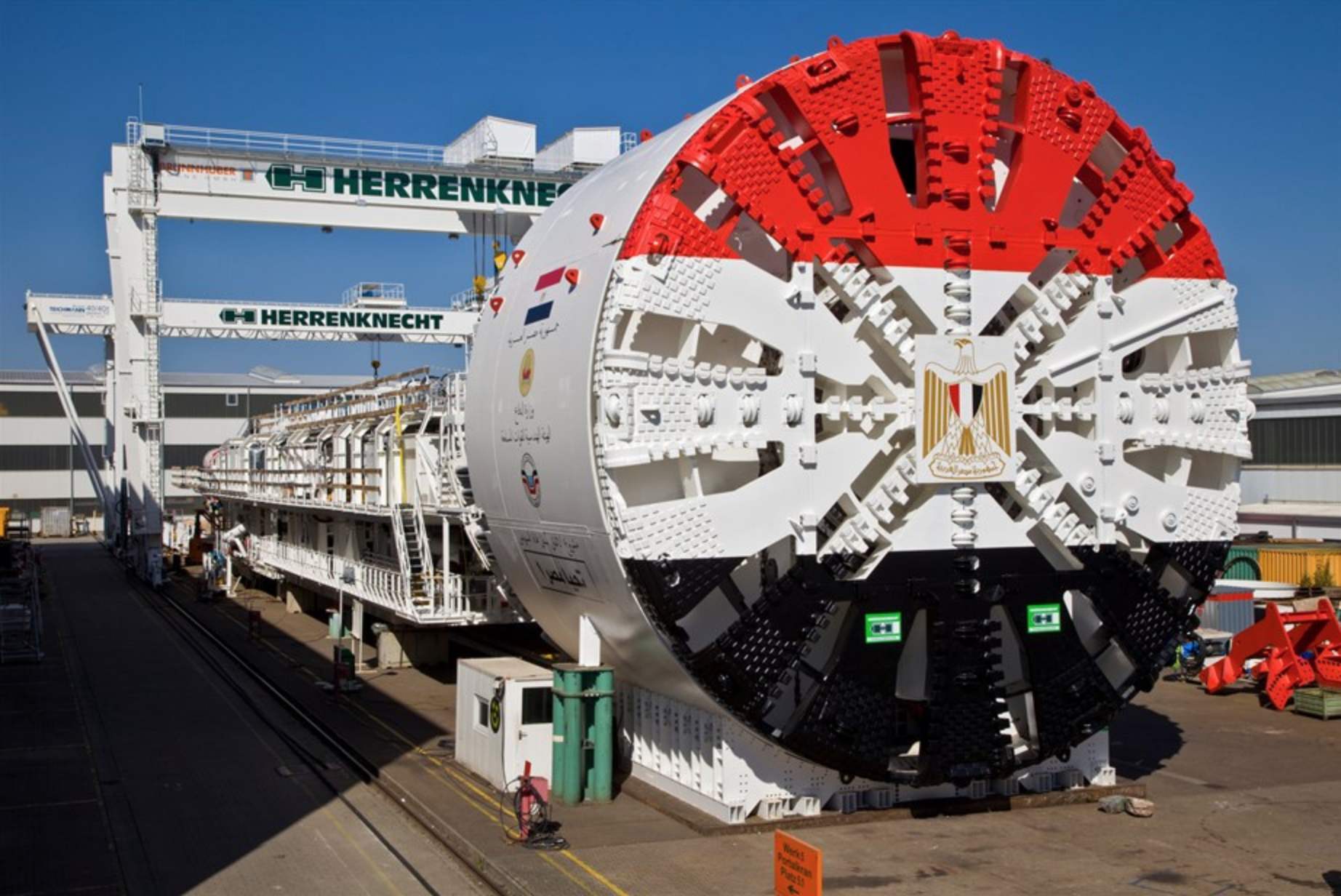Major progress is being achieved on Egypt’s key tunnel project, a link that runs underneath the Suez Canal.
The tunnel driving work has been carried out using large tunnel boring machine (TBM) technology supplied by German firm Herrenknecht. The project involves the construction of two tunnel stretches, both with twin tubes, which will improve traffic connections to the Sinai Peninsula. The tunnels are being built at Port Said and Ismailia and are designed to link the Sinai Peninsula more closely to the Egyptian heartland. Instead of spending up to five days waiting in long queues for the existing ferry, crossing the Suez Canal using the new tunnels will only take 10 minutes in the future.
In all, the project has required the construction of four tunnel tubes under the artificial waterway, taking around 1½ years to drive. The shells are now almost completed: two road tunnels were built north of Ismailia and run under the old and new Suez Canal. Two more cross beneath the canal south of Port Said. With this key large-scale project, Egypt is expanding infrastructure immensely important for world trade. The improved connection between the cities and the waterway’s eastern shore will simplify trade activities, facilitate traffic and support economic development of the region.
For the new Suez crossings, Egypt’s president ordered a total of four identical MIxshield TBMs: S-958, S-959, S9-960 and S-961 from Herrenknecht. The work was carried out by two sets of construction partners, one a joint venture comprising Arab Contractors and Orascom and the other a joint venture comprising Petrojet, Concord and CMC. The TBMs were used to bore the tunnels near the Egyptian cities of Ismailia and Port Said at depths of up to 60m and at a water pressure of up to 6bars. All in all, the TBMs drove a total of 15.3km of new tunnel sections.
To assist the project during the very complex tunnel operations, Herrenknecht trained 40 Egyptian engineers in Schwanau and on the jobsites. For optimal support of the tunnelling processes, Herrenknecht also provided the tunnelling teams with services and supplied key peripheral equipment through its subsidiaries VMT, MSD, Formwork, H+E and TMS.
The four Mixshield TBMs all feature shield diameters of 13.02m, with power ratings of 3,500kW and maximum torque of 16,779kNm. The TBMs have been used to drive two tunnels that are 4.8km long, as well as a further two tunnels that are 2.8km long. The project team has had to contend with geological conditions that feature heterogeneous ground, clay and sand.
External link: https://www.worldhighways.com/categories/road-highway-structures/products/egypts-canal-tunnel-project/









